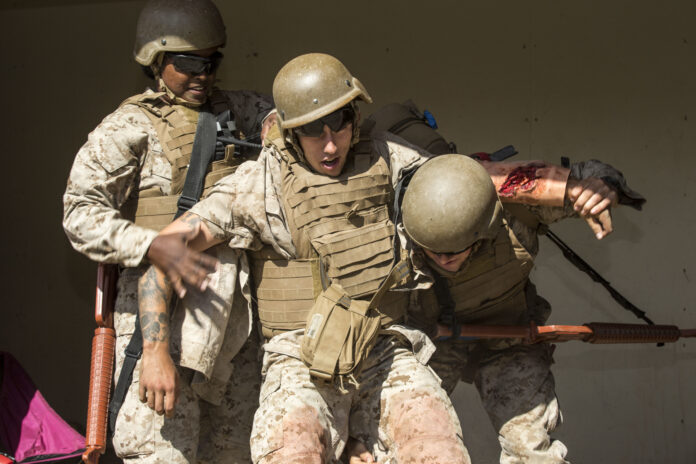
Summary
Tactical Evacuation Care (TACEVAC) is the third phase in the Tactical Combat Casualty Care process. Tactical evacuation encompasses both medical evacuation (MEDEVAC) and casualty evacuation (CASEVAC). The care delivered in the TACEVAC phase can more closely resemble advanced trauma life support guidelines than that in the first two phases. With either vehicular or air evacuation of wounded casualties from the battlefield, there is an opportunity for access to additional medical equipment not available to the Corpsman during the first two phases. One example is the use of pulse oximetry devices, which detect the percent of hemoglobin with oxygen bound to it and gives you an indication of how well the casualty is breathing. It also allows for early detection of pulmonary compromise or cardiovascular deterioration before physical signs are evident. They are highly reliable and can apply across all ages and races. This lesson will describe the taxonomy of care, different methods of casualty evacuation, and how to call for an evacuation.
Analysis
MCIs can be broken into multiple phases where some need more planning and strategies while others have a pretty routine game plan as to what happens. This document dives into the third phase, Tactical Evacuation Care, or TACEVAC. This includes both medical and casualty evacuation which follows some guidelines seen in the first two phases, but this article gives us insight into the modes of transport, communication codes, and taxonomy codes. What I found to be the most interesting was the 7 different types of litter and their uses and the codes of conduct for carrying someone in a litter. Regardless of how many litters there are they all have one thing in common, it takes 2-4 people for them to be carried. I don’t think that the amount of people needed to carry a litter is the problem, but how can I use what I have learned from this to identify what is at stake here? Making the job easier on the carrier, or making the injured more comfortable is just scratching the surface of what can be explored by this information. It’s a great resource for me to learn more about the specific and hopefully analyze deep-rooted problems that aren’t seen by just the form and function of litter carriage.



